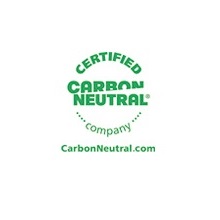Supporting the transition to a low-carbon economy, one step at a time
Achieving CarbonNeutral®1 company certification for our global operations is one of the ways we’re taking climate action. As a company with operations across the world, the journey to get here didn’t happen overnight.
We used a two-step approach to reach carbon neutrality:
- Reducing our total energy consumption (the source of greenhouse gas (GHG) emissions in our operations) by investing in energy-efficiency initiatives in our offices.
- Buying high-quality carbon credits to offset GHG emissions we haven’t yet reduced or eliminated. We’re working on decarbonizing our operations – but because we can’t achieve true net zero today, in the meantime, we’re purchasing enough high-quality carbon credits to match the emissions we haven’t yet eliminated.
Reducing energy consumption
We began measuring and reporting GHG emissions in some regions more than a decade ago. Our global emissions measurement goes back as far as 2014. This practice allows us to analyze our carbon footprint in different regions (how our buildings and business activities use energy). It also helps us pinpoint ways to lower energy consumption and resulting GHG emissions. Refer to the examples below for the types of small- and large-scale energy efficiency and emission reduction initiatives we have implemented across our operations.
Global initiatives:
- considered sustainable building design in office renovations and new builds to optimize energy performance while minimizing materials waste and water usage
- reduced business travel
- engaged Sun Life employees in energy conservation efforts through internal communications
Regional initiatives:
- performed energy audits (level 1 and 2) at all North American sites
- identified emissions reduction opportunities and invested the capital needed to increase the energy efficiency of our office spaces, including through the following initiatives:
- LED lighting retrofit in North American properties, a multi-year initiative completed in 2021;
- replaced windows and upgraded HVAC systems in North America; and
- installed on-site renewable energy generation (solar) in an office in Asia
- created a scorecard for our North American portfolio to assess performance in meeting environment and health standards
Using carbon credits to neutralize GHG emissions
For those GHG emissions we haven’t yet been able to reduce or eliminate yet, we bought high-quality carbon credits. They allow companies to support projects around the world that avoid or remove GHG emissions from the atmosphere. It’s a way to balance out a company’s net carbon effect. We’ll continue our work to reduce our GHG emissions on our path to net zero, but offsetting the GHG emissions our operations currently produce was a good complementary measure in the meantime. In 2021, with the support of Climate Impact Partners, we bought carbon credits to support conservation and biodiversity projects in Canada and Indonesia, reforestation in the U.S. and clean cookstoves for low-income communities in India. To learn more, read the feature story “Carbon offsets help the environment, communities and Sun Life”.

Lightening our carbon footprint
Together, these efforts have helped us reduce or mitigate the effects of our carbon footprint:
- In 2019, a year ahead of schedule, we met our 2020 target to reduce GHG emissions intensity2 by 20%.
- In 2021, we achieved CarbonNeutral®1 company certification across our global business operations in line with The CarbonNeutral Protocol. This certification covers all our operational Scope 1, 2 and selected Scope 3 GHG emissions from our corporate offices, data centers and business travel. Obtaining this certification required a rigorous and independent assessment of our GHG emissions.
Overall, we have achieved a 34.7% reduction in GHG emissions intensity since 20142.
Beyond carbon neutrality
We intend to keep our carbon neutral status every year. But there’s a lot more work to do on our carbon reduction journey. To take our climate commitments to the next level, we set an ambitious goal to achieve net-zero GHG emissions by 2050. As part of that goal, we set a target of a 50% absolute reduction of GHG emissions in our operations by 2030 (relative to 2019). We’ll start reporting on our progress in our 2022 Sustainability Report.
To reach our 2030 target and longer-term goal, we’re considering more ways to reduce GHG emissions at Sun Life. Possibilities include purchasing more renewable energy for our building operations, thereby removing carbon from our electricity supply. We also plan to introduce an internal carbon charge for business air travel to reduce scope 3 GHG emissions as we emerge from pandemic-related restrictions.

Alanna Boyd
“We decided to use carbon offsetting to bridge the gap between our emissions reductions and carbon neutrality. It was important to do it in a credible way. The rigour of the CarbonNeutral company certification process and the quality of projects we selected gave us confidence in our approach.”
1 CarbonNeutral® is a registered trademark of Climate Impact Partners and is achieved in accordance with The CarbonNeutral Protocol, the leading global framework for carbon neutrality.
2 As at December 31, 2021, Sun Life calculates GHG emissions intensity annually and reports cumulatively versus the 2014 baseline. This includes GHG emissions resulting from energy, water, and waste (where weight data exists), and normalized to remove the impact of changing weather, occupancy and exceptional loads, for Real Estate Investment properties where Sun Life has financial control, and global Corporate Real Estate properties >40,000 ft² where Sun Life has financial control. Reported emissions account for the purchase of renewable energy credits and carbon offsets (market-based reporting).

